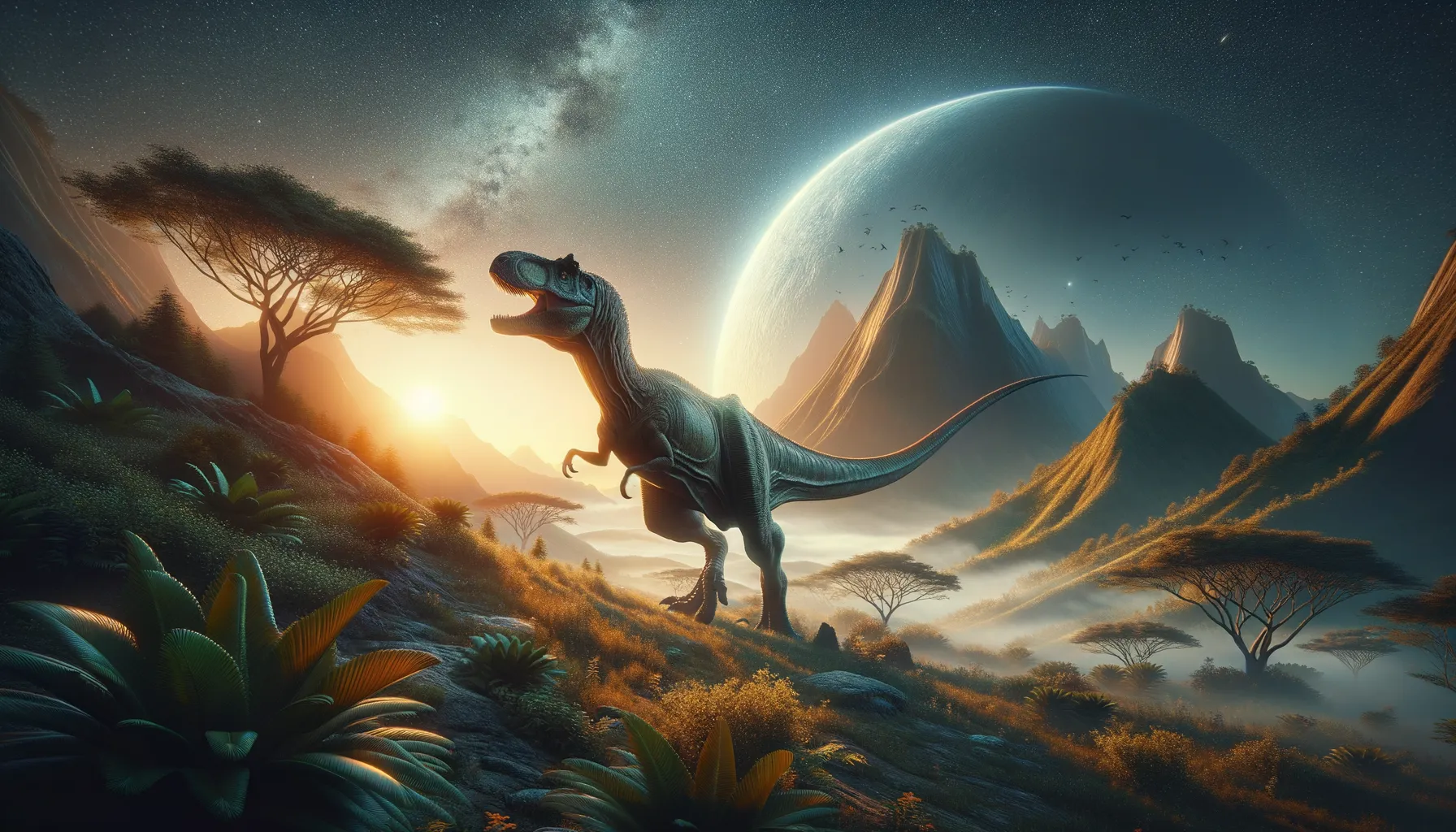
Avalonia
The swift giant of the Jurassic era.
Period
Jurassic
Length
Nearly 10 meters long.
Height
About 3 meters tall.
Weight
Roughly 1,200 kilograms.
This dinosaur lived during the Jurassic period and was first discovered in southern England. Known for its moderately fast speed, it roamed the land with agility, aided by its impressive physical size. Studies suggest its primary diet comprised of herbivorous feeding. The discovery of Avalonia has provided significant insights into the diversity and evolution of Jurassic-era dinosaurs.
Diet
Avalonia was primarily a herbivore, feeding on the lush vegetation available during the Jurassic period. Its diet likely consisted of ferns, cycads, and other low-lying plants, which it could easily graze due to its size.
Hunting
While not a hunter by nature, Avalonia may have used its speed to evade predators. Its feeding habits involved moving frequently across its territory in search of the best plant resources.
Environmental challenges
Avalonia faced numerous environmental challenges, including periods of drought and competition for resources. The shifting landscapes of the Jurassic period required adaptability and the ability to find new feeding grounds. Its large body also meant it had to consume vast quantities of vegetation to sustain itself, which could be a challenge in overpopulated areas.
Speed
Estimated to be moderately fast.
Lifespan
Approximately 20 to 30 years.
First discovery
Discovered in the early 1990s in southern England.
Fun Facts
- Avalonia was not a dinosaur, but actually an ancient microcontinent that existed during the Paleozoic era.
- The name 'Avalonia' is derived from the Avalon Peninsula in Newfoundland, Canada, where rocks from this microcontinent were first studied.
- Avalonia collided with other land masses to eventually form part of modern-day North America and Europe.
- The collision of Avalonia with other continents helped to create the Appalachian Mountains in North America.
- Fossils found in rocks from Avalonia have provided important clues about early life and ancient environments.
- The study of Avalonia has helped scientists understand the movement of Earth's tectonic plates over millions of years.
Growth and Development
Avalonia experienced a rapid growth phase in its early years, quickly reaching its formidable size to deter predators. As it matured, growth slowed but remained steady, which ensured its dominance in its ecological niche. Fossil evidence suggests it had a long development period before reaching full maturity.
Habitat
Avalonia thrived in lush, forested areas with ample vegetation to support its herbivorous diet. These forests provided both food and shelter from larger predators. The warm climate of the Jurassic period contributed to a diverse ecosystem that could sustain large herbivores like Avalonia.
Interaction with other species
Avalonia coexisted with various other species, likely forming herds for protection against predators. Its interactions were mostly with other herbivores, leading to competition for food but also social bonding within herds. Predatory threats likely led to instances of stampedes or defensive measures by these herd communities.
Natural lifespan
Avalonia's natural lifespan extended up to three decades under optimal conditions.
Reproduction
Avalonia likely laid eggs, similar to other large dinosaur species. Nesting sites suggest communal nesting behaviors, offering protection to hatchlings and ensuring higher survival rates. Parental care may have been limited to guarding the nest from predators.
Social behaviour
As a social species, Avalonia may have formed large herds for safety and social interaction. This grouping behavior would have offered protection from predators and facilitated communication among individuals. Social hierarchies might have existed, with dominance acquired through size or age.
Fossil locations
Fossil remains of Avalonia have been predominantly found in southern England, offering a glimpse into its range during the Jurassic period. These locations provide crucial evidence for understanding the distribution and ecological preferences of the species. Ongoing excavations continue to uncover additional sites, broadening our understanding of its habitat.
